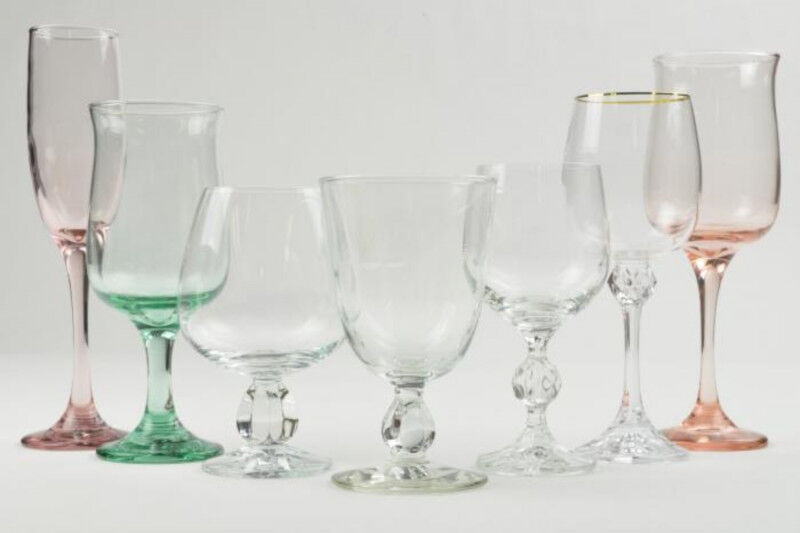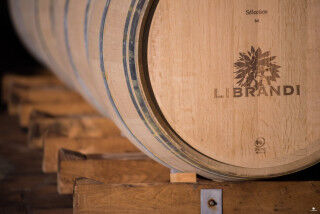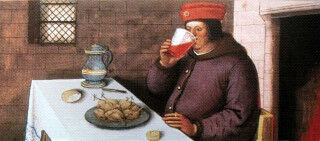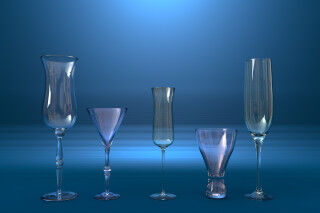So what are the specifics on how glasses help your wine? First and foremost, you need a glass with a stem - this is where you should hold your glass (never around the bowl) in order to maintain wine temperatures. Then you need a clear glass, preferably thin crystal. This allows you to view both the legs of the wine (the alcohol content and/or sugar content), as well as your wine’s hues. Once we have these two elements down, we move on to the next and more debatable element: glass shape.
Why does glass shape matter? Lots of different factors apply here, starting with the upper vs. lower glass shape. It's critical for certain glassware types that a proper wine glass start off bigger at the part closest to the stem, and then taper off towards the rim. The narrow top of the glass helps the aromatic profile exit from your wine, and ensures that your wine is expressing itself as much as possible.
The narrowed rim allows the ethanol to escape in a ringed shape, so while you're smelling the wines and soaking up the good stuff, you're not smelling alcohol. The greater the space in the bowl between your nose and the wine, the more room for ethanol to escape via the rimmed top. It sounds esoteric, but a study using a tool called a sniff-cam proved this chemical reaction, so we can trust our noses are bringing in only the aromas of the wine in the bowl.
The amount of wine’s oxidation will depend on the width of the bowl, and sometimes oxidation is what you want. So, with all of this in mind, check out our short list below for what you should be using to drink those wonderful wines in your collection.
Red wine glasses: should be characterized by large round bowl to increase oxidation. Relative to your wine, you should opt for either a Bordeaux glass with its broad bowl (good for Cabernet Sauvignon wines, allowing tannins to soften) or a Burgundy glass with its even wider bowl (good for Pinot Noir wines).
White wine glasses: slightly inward rimmed glasses are good, and with wide variation between whites needing oxidation and those that require less exposure to air. In general, small rims are more desirable.
Champagne flutes: should always have very long stems in order to maintain chilled temperatures. Also always look for small narrow rims that extend carbonation.
Fortified wine glasses: shorter stems, sometimes missing stems entirely (like brandy, which is fine as it’s meant to be served a bit warmer). Smaller bowl to reduce alcohol evaporation and to highlight rich, fruity aromas.
There are also universal glasses, which as you probably guessed, are appropriate for most wines you'll be drinking, and which are made for you to be able to enjoy a variety of wines at home without having to fill every cabinet with 6 different stemware types. These are terrific choices for people with limited space, like those of us in aparments with less than generous kitchen space - we speak from experience.
If you have space, go for the gold and get the different glasses for the different wines - your palate will thank you! We hope this guide will help you learn a bit more about the fascinating world of wine. There’s a lot to learn, and even more to keep tasting!
If you're asking yourself why wine glass shape, size, and material composition even matter, be sure to check out another article by our team of experts on just this very subject here.
Want to know what to put in your gorgeous new wine glasses? Check out Mamablip's video series on Brunello di Montalcino select vintage tastings and get some great ideas from Filippo Bartolotta, Mamablip wine expert.
Stay tuned and sign up below for the Mamablip Newsletter. Stay up to date on all of Mamablip's kitchen and winery secrets that you won't want to miss!





